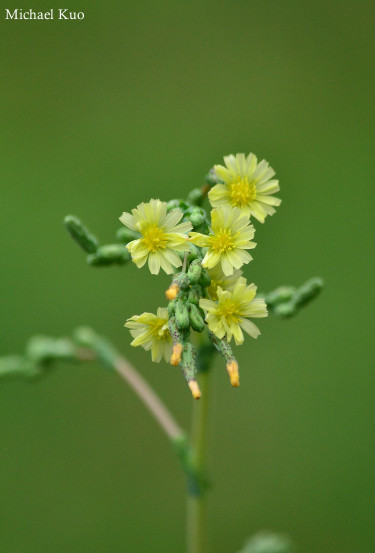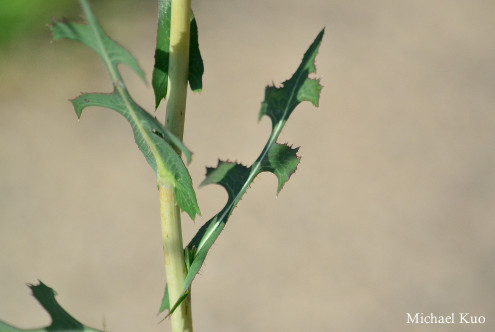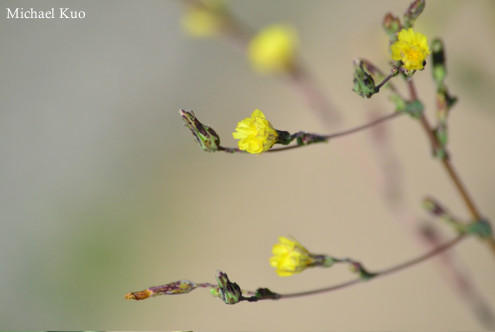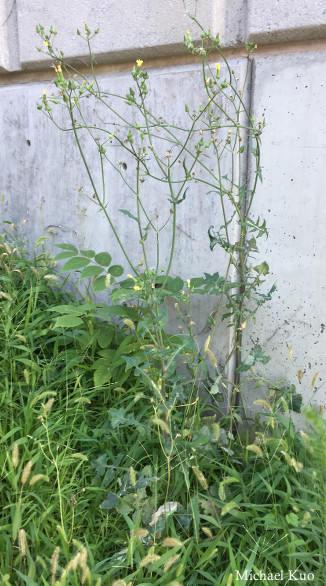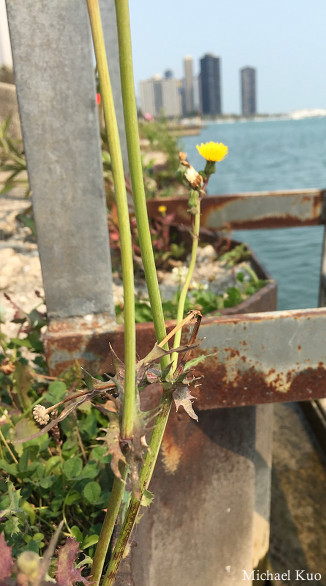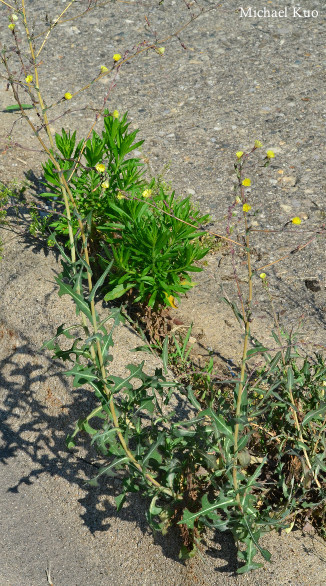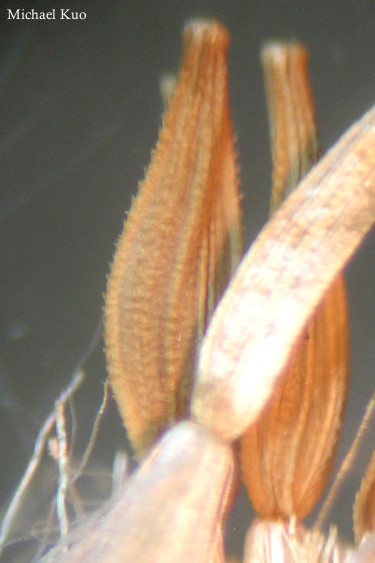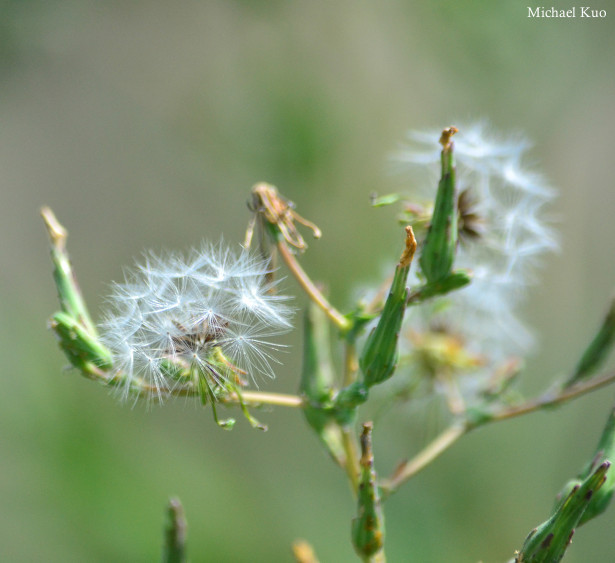
Sonchus oleraceus (common sowthistle) |
|
|
Prickly sowthistle (Sonchus asper) is very similar, and can be difficult to separate without close observation. Compounding the difficulty is the fact that the identifying features of the plants sometimes overlap. In general, however, the leaves of common sowthistle are not as dark and glossy as the (fresh) leaves of prickly sowthistle, and their prickles are smaller (usually much smaller) and softer. The middle vein on the underleaf of common sowthistle is finely prickly, while the vein on prickly sowthistle is not. The leaf bases are often different, and this difference is commonly put forth as the best way to separate the plants: common sowthistle leaves have pointed, almost linear leaf bases, with one point extending past the stem on either side—while the leaf bases of prickly sowthistle are curved, often widely. However, be sure to examine young leaves near the top of the plant (and even then, be prepared for some confusion). If you have a good magnifying glass or a dissecting microscope and you really care what kind of sowthistle you're looking at, you might want to have a talk with yourself about priorities. If, after this discussion, you still want to pursue sowthistle identification, you will need to wait until your plant goes to seed (go ahead; get out your lawn chair and a cooler), and extract some of the seeds (the tiny, hard things at the end of each cottony parachute thing). Under good magnification, the seeds of common sowthistle are vertically grooved and pimply along the ridges, whereas the seeds of prickly sowthistle are merely grooved. Feel good about the world now? What was in that cooler, anyway? Common sowthistle and prickly sowthistle differ from another Midwestern sowthistle, field sowthistle (Sonchus arvensis), in the size of the flowers; field sowthistle flowers measure 4–5 cm across and are about twice as large. All three species are more closely related to wild lettuce than to actual thistles, despite their common names. |
|
|
|
|
|
|
|
|
|
|
|
|
References: Jones 1971, Wilkinson & Jaques 1972, Voss & Reznicek 2012, Mohlenbrock 2014, Hilty 2017, USDA 2017. Kuo, Michael & Melissa Kuo (December, 2017). Sonchus oleraceus (common sowthistle). Retrieved from the midwestnaturalist.com website: www.midwestnaturalist.com/sonchus_oleraceus.html All text and images © , midwestnaturalist.com. |
